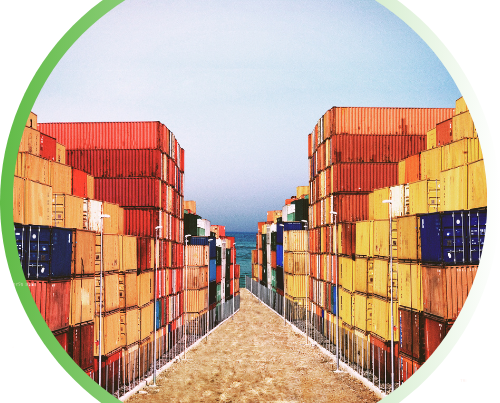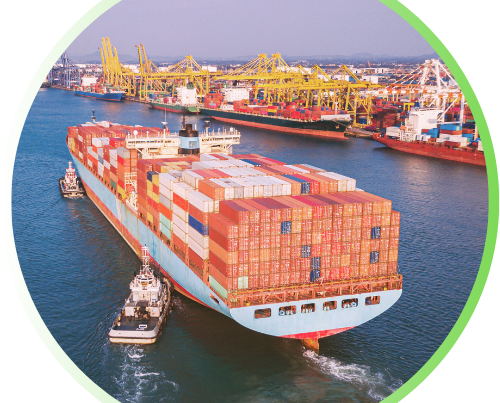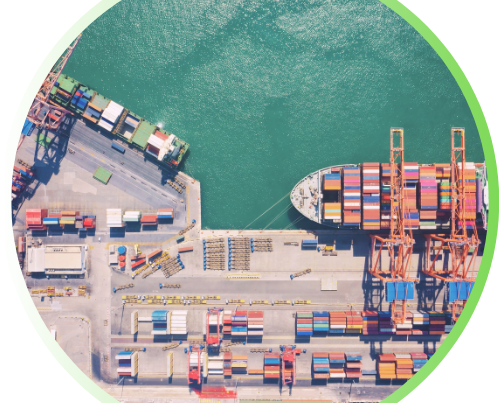Global Shipping Industry Faces Challenges Due to Container Shortages and Red Sea Disruptions
The global shipping industry is currently grappling with a significant container shortage exacerbated by disruptions in the Red Sea. CargoGulf’s global development director, Hans-Henrik Nielsen, reports a growing difficulty in acquiring 40ft high-cube and 20ft general-purpose containers at major Chinese ports. Despite efforts to reposition empty containers and acquire new-lease containers, the shortage is severe, with leasing companies running out of stock. This shortage is causing ripple effects across the industry, leading to re-routings, delays, and cancellations, and is expected to result in increased costs that will impact consumers worldwide.


Global Shipping Industry Faces Challenges Due to Container Shortages and Red Sea Disruptions
The global shipping industry is currently grappling with a significant container shortage exacerbated by disruptions in the Red Sea. CargoGulf’s global development director, Hans-Henrik Nielsen, reports a growing difficulty in acquiring 40ft high-cube and 20ft general-purpose containers at major Chinese ports. Despite efforts to reposition empty containers and acquire new-lease containers, the shortage is severe, with leasing companies running out of stock. This shortage is causing ripple effects across the industry, leading to re-routings, delays, and cancellations, and is expected to result in increased costs that will impact consumers worldwide.
U.S. Truck Shippers Prioritize Stability and Capacity Amid Weak Freight Demand and Fluctuating Rates
In early 2024, U.S. truck shippers are reportedly focusing on stability and capacity in their contract negotiations despite weak freight demand and fluctuating rates across the trucking industry. According to Chris Henry, COO of KSM Transport Advisors, there is a shift from shorter contracts to more one-year and two-year bids, reflecting a desire for stability. This change is occurring amidst a backdrop of potential disruptions, such as winter storms, which could impact truckload spot rates. The industry is showing positive signs of recovery, but shippers remain cautious, preferring to secure capacity in anticipation of future demand rather than using their current leverage aggressively.


Russia’s Largest E-commerce Platform Wildberries Opens to Chinese Sellers
Wildberries, Russia’s largest e-commerce platform, has announced its expansion to Chinese sellers. The founder, Tatyana Bakalchuk, revealed that Wildberries had been testing the Chinese market and had started partnering with Chinese manufacturers and sellers to supply directly to their platform. This move enables Chinese sellers to reach all countries covered by Wildberries, including Belarus. A Shenzhen-based seller named “yibai” has already joined the platform, offering over 200 home goods and automotive accessories products, which will be shipped directly from a warehouse in Moscow. This expansion reflects Wildberries’ growth as it encompasses markets across 15 countries, further integrating Russian and Chinese e-commerce sectors.
Ship Insurers Exclude U.S. and UK Vessels from Red Sea Coverage Following Increased Risks
In response to heightened risks in the southern Red Sea, ship insurers are now seeking exclusions for U.S. and U.K. merchant ships against war risks in the region. This change follows recent airstrikes on Yemen by the U.S. and U.K. and subsequent attacks on commercial ships by Houthi militants. The insurers’ exclusions typically mention no U.S., U.K., or Israeli involvement and cover ownership and interests. The Greek-owned commodity carrier Zografia and the US-owned Gibraltar Eagle were recently hit by missiles but continued their voyages. Major shipping companies, including Shell Plc and Mitsui OSK Lines, have halted tanker transits through the area. The exclusions pose a challenge due to their broad interpretation, and while attacks have been frequent, they have not yet prevented ships from continuing their journeys. The risk implications for the wider shipping industry are significant, with war risk rates surging dramatically.


U.S. Container Imports See Modest Growth in December 2023 Despite Global Shipping Disruptions
In December 2023, U.S. container imports showed a modest increase, growing by 9.2% compared to the previous year, reaching 2.1 million TEUs. This growth continues to exceed pre-pandemic levels, despite potential impacts from global shipping disruptions like those in the Red Sea. The total import volumes for the year marked a 4.6% increase over 2019 but a decline of 11.7% from the pandemic surge in 2022. Notably, East and Gulf Coast ports in the U.S. saw a rise in their share of container imports to nearly 45%, while top West Coast ports experienced a decrease in market share. The report by Descartes Systems Group highlighted unexpected trends, such as the unaffected volume at East and Gulf Coast ports despite the Panama Canal drought, and increased port delay times, especially at the Port of Houston.
Cainiao Enters U.S. Consolidated Shipping Market with Fast Air and Sea Freight Options
Cainiao, the logistics arm of Alibaba Group, has announced its entry into the U.S. consolidated shipping market, offering rapid air and sea freight services. The company promises air freight delivery within 5 days and sea freight within 15 days, aiming to serve the Chinese diaspora and international students in the U.S. Additionally, Cainiao’s consolidated shipping supports automatic synchronization of Taobao orders and one-click consolidation of packages from multiple sources. This move marks a significant expansion of Cainiao’s international logistics capabilities, already covering over 200 countries and regions, and reflects the company’s commitment to enhancing cross-border e-commerce logistics efficiency.


China Remains Global Leader in Online Retail Market for 11 Consecutive Years
The People’s Republic of China’s Ministry of Commerce has announced that the country has maintained its position as the world’s largest online retail market for the 11th consecutive year. The number of e-commerce workers has risen from 47 million to over 70 million since the implementation of the E-commerce Law in 2019. The total e-commerce transaction volume increased from 31.63 trillion yuan in 2018 to 43.83 trillion yuan in 2022, with online retail sales of physical goods exceeding a quarter of the total retail sales. The digital transformation in e-commerce has spurred the development of large-scale B2B platforms and digital industry belts in sectors like chemicals and construction materials. This growth reflects China’s significant role in the global digital economy and its continuing expansion in the e-commerce sector.

